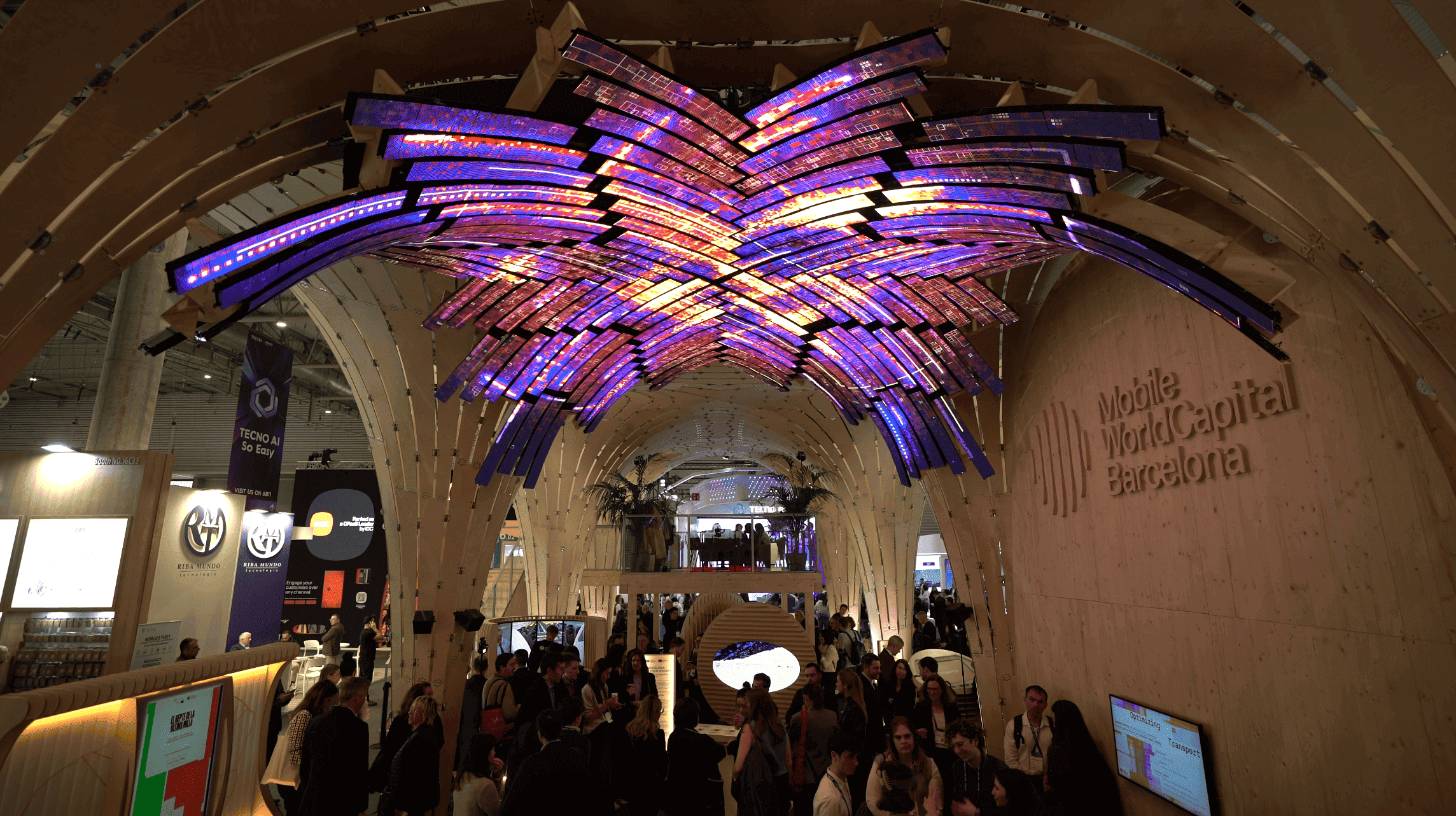A living digital ecosystem for Barcelona World Capital at MWC25. Real-time visuals driven by data and technology, exploring urban renaturalization through generative design.
MWC 2025 Digital Sculpture
At MWC25, we turned a large-scale LED dome into a living, breathing ecosystem — a sculptural installation where technology and nature converge in real time.
Conceived around the theme of urban renaturalization, the piece reflects on how digital tools and intelligent systems can help cities regenerate, adapt, and reconnect with their environment. It’s a vision of the future shaped by data, light, and evolving patterns.
Across its timeline, the dome reveals five core processes driving this transformation: Collecting data. Monitoring the environment. Modeling nature. Optimizing transport. Developing sustainable materials.
More than a spectacle, the installation immerses viewers in a speculative ecosystem — where architecture, computation, and biology converge to suggest how urban spaces might live, grow, and renew themselves in the years to come.
A data-driven landscape.
A visual ecosystem in constant transformation.
A vision of the future, alive in the present.

The dome was concieved as a modular living system, with visuals evolving autonomously through generative design. Inspired by biological logic and cellular automata like Conway’s Game of Life, the dome reacts and adapts—growing, shifting, dissolving—scene by scene.Visually, we embraced a post-digital aesthetic that merges organic forms with digital culture. From ecobrutalist structures to micro and macro ecosystems, every element is designed to feel alive and deeply integrated with the surrounding architecture.


Inspired by biological logic and cellular automata like Conway’s Game of Life, the dome reacts and adapts—growing, shifting, dissolving—scene by scene. Visually, we embraced a post-digital aesthetic that merges organic forms with digital culture. From ecobrutalist structures to micro and macro ecosystems, every element is designed to feel alive and deeply integrated with the surrounding architecture.
To complement the dome, a real-time info screen offers a second layer of meaning—contextualizing the visuals and narrating how technology is actively shaping the cities of tomorrow.



Collecting Data
This chapter focuses on the capture of environmental information — from air quality and temperature to noise levels and humidity. These data points become the foundation for understanding how cities interact with nature. By visualizing this invisible layer, we reveal the rhythms and imbalances of the urban ecosystem.
Monitoring the Environment
Beyond data collection, this stage is about continuous observation through sensor networks. It represents the city’s sensory system — tracking change in real time. This allows us to detect issues early, adapt infrastructures, and maintain a healthier, more balanced urban environment.
Modeling Nature
Using the data gathered, we simulate complex natural and urban systems with Digital Twins — digital replicas of real environments. This enables us to predict behaviors, test interventions, and imagine new eco-urban possibilities before implementing them in the real world.
Optimizing Transport
Mobility is one of the biggest factors in urban sustainability. This chapter explores how technology — from multimodal transport systems to AI-optimized routes and car sharing platforms — can make movement in cities more efficient, cleaner, and human-centered.
Developing Sustainable Materials
The final chapter looks toward the future of construction and design. With the help of AI and biotechnology, we’re developing new materials that are biodegradable, low-impact, and regenerative — essential for building cities that not only reduce harm but actively contribute to the health of the planet.
Federico Gonzalez
Mathieu Felix
Javier Pinto
Daniel Guillen
Vanesa Palmeri
Sonicarts
Daniel Martínez Sebastián
